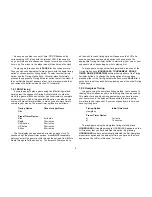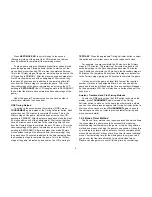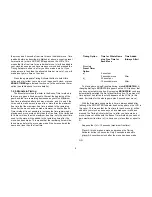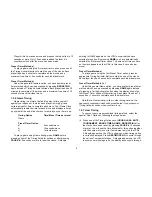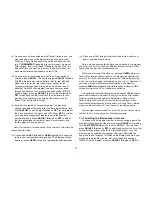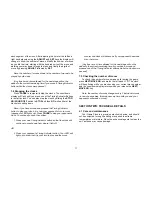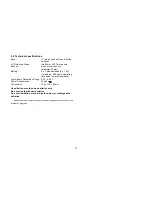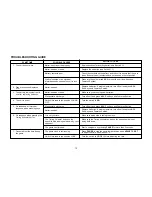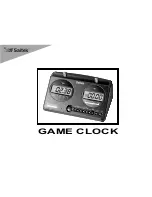
6
Press NEXT/MOVE NO. to cycle through to the second
(Secondary) stage of the game (the LCDs remind you that you
have 60 minutes to complete all the remaining moves).
To play a game using the Standard preset timer option, simply
press the appropriate Timing Activator button to start one of the
clocks. Each player then has 120 minutes to complete 40 moves.
This is the
Primary stage of the game, indicated by an arrow on the
LCD pointing to PRIMARY. After the players have each made their
first 40 moves within each of their designated 120 minutes, they
then have 60 minutes each in addition to the remaining time left
over from the Primary stage to complete the game. This is the
Secondary stage of the game, indicated by an arrow on the LCD
pointing to SECONDARY (the LCD triangle points to SECONDARY
to show that the players have entered the Secondary stage of the
game).
Under this general Tournament option, you have another 4
preset timer methods to choose from:
FIDE Timing Method
To switch to the second preset timer option (FIDE), press
TOURNAMENT again instead of the Timing Activator button. Each
player then has 120 minutes to complete 40 moves. This is the
Primary stage of the game, indicated by an arrow on the LCD
pointing to PRIMARY. After the players have each made their first
40 moves within each of their designated 120 minutes, they then
have 60 minutes each in addition to the remaining time left over
from the Primary stage to complete the next 20 moves. This is the
Secondary stage of the game, indicated by an arrow on the LCD
pointing to SECONDARY. After each player has made 20 more
moves without using all the allocated time (time remaining), they
then each have 30 minutes in addition to the time remaining from
the Secondary stage to complete the game. This is the
Tertiary
stage of the game, indicated by an arrow on the LCD pointing to
TERTIARY. Press the appropriate Timing Activator button to select
this option and start either your own or your opponent’s clock.
For example, you may complete the 40 moves in the Primary
stage in 110 minutes. The remaining 10 minutes is added to the
secondary stage i.e. the Secondary stage becomes 70 minutes
long. Should you complete the 20 moves in the Secondary stage in
50 minutes, the remaining 20 minutes of this stage is carried over
to the Tertiary stage, giving you 50 minutes to complete the game.
If at any point in the game a player fails to meet the required
number of moves in the designated time, he or she has lost the
game and the zeros will flash and the time’s up symbol will appear
on the appropriate LCD. You will also hear a series of beeps if the
sound is on.
Amateur, Traditional and Club Timing Methods
To skip the FIDE option when the FIDE option is shown on the
display, press TOURNAMENT again instead of the Timing
Activator button to move on to the next preset timer option, where
you can then either press an appropriate Timing Activator button to
start one of the clocks or press TOURNAMENT again to pass to
the next option and so on (refer to previous table) for timing and
move number details).
1.2.4 Bonus Timer Method
The Bonus Timer method is an ingenious invention which allows
the chess players’ performance to be successfully measured,
without having to either adjourn the game, or rely on the guillotine
method as a means of ending the game in one session. It does this
by providing the players with an amount of time to complete all the
moves plus an amount of bonus time (free time) for each individual
move. Your remaining time for the whole game is only reduced if
you go over the free time allocation for each individual move.
Players can also gain more overall thinking time by completing a




